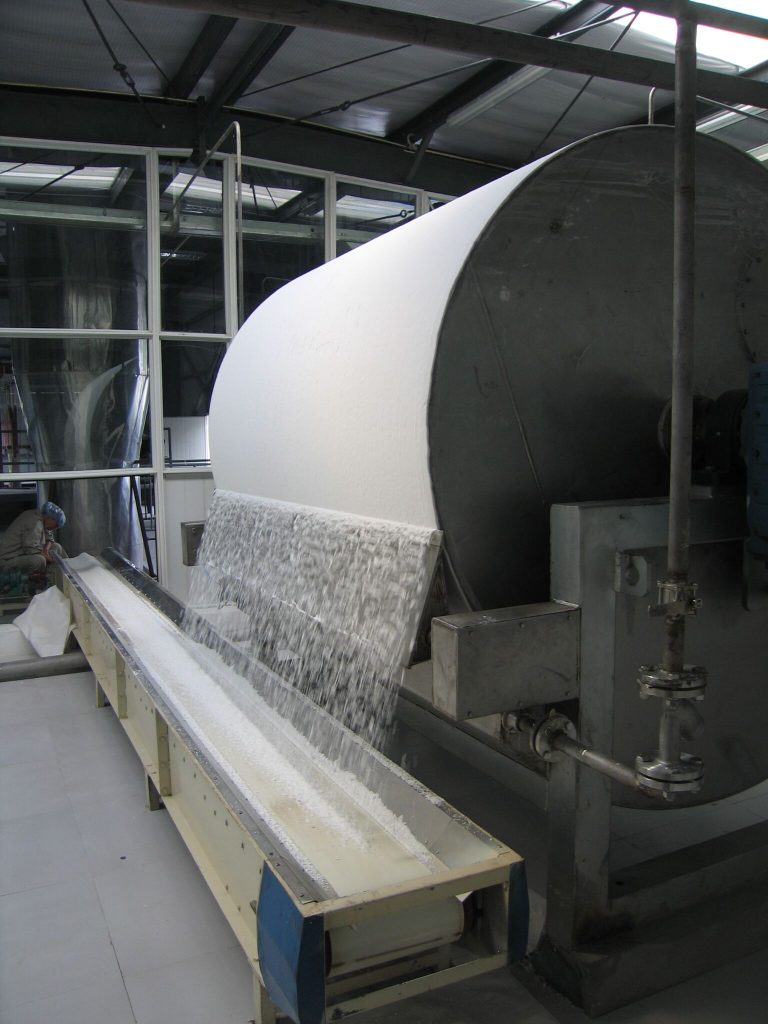Operating procedures and related key points of a 100-ton cassava starch factory:
1. Receiving and storing raw materials
cassava receiving
Cassava usually arrives at the factory in fresh or dried chips. Upon receipt, the quality of the cassava should be checked, including whether there is rot, disease or insect damage, etc. For fresh cassava, the transportation time should be shortened as much as possible to avoid deterioration during transportation.
store
If it is fresh cassava, it should be stored in a well-ventilated, dry warehouse or yard. They can be stacked in layers, but care should be taken to avoid stacking them too thickly, which may cause heat and rot. The general stacking height does not exceed 2-3 meters.
2. Cleaning process
Preliminary cleaning
Place the cassava or cassava chips in a cleaning device, such as a squirrel cage or spray washer. For fresh cassava, impurities such as soil, sand, and attached weeds must first be removed from the surface.
Second cleaning
After the initial cleaning, a secondary cleaning can be performed to further remove impurities. Some factories will add an appropriate amount of disinfectant, such as sodium hypochlorite (generally at a concentration of 50-100ppm), in the secondary cleaning water to disinfect cassava to prevent microbial contamination.
3. Crushing process
broken
Cleaned cassava or cassava chips enter the crusher. Select the appropriate crushing equipment and parameters based on the state of the cassava (fresh or dried flakes). For fresh cassava, the blade spacing of the crusher can be set at 5 – 10mm; grating
The crushed cassava enters a rasp or other grinding equipment for grinding. During the grinding process, the feed speed and the rotation speed of the equipment must be controlled.
4. Extraction and separation process
Starch slurry extraction
The grated cassava forms a starch slurry. The starch slurry is initially separated through a screen or centrifugal screen to remove larger fiber impurities.
Refining and separation
The starch slurry is further refined and separated using a cyclone or centrifuge. 5. Concentration and dehydration process
concentrate
Use a vacuum concentration tank or multi-effect evaporator to concentrate the starch slurry. In the vacuum concentration tank, the vacuum degree is generally controlled at – 0.08 – – 0.09MPa, and the temperature is 50 – 60°C to avoid starch gelatinization.
dehydration
The concentrated starch slurry enters a vacuum dehydrator or centrifuge for dehydration. The working pressure of the vacuum dehydrator is generally – 0.06 – – 0.08MPa, and the moisture content of starch after dehydration can be reduced to 35 – 40%.
6. Drying and packaging process
dry
The dehydrated wet starch enters drying equipment, such as air flow dryer or drum dryer. The inlet air temperature of the airflow dryer is generally 120-150℃, and the outlet air temperature is 40-60℃.
The moisture content of dried starch should be controlled below 12-14% to ensure the quality and storage stability of the starch.
Package
The dried cassava starch is packaged through an automatic packaging machine. Different packaging specifications can be selected according to customer needs, such as 25kg/bag, 50kg/bag, etc.
During the packaging process, the packaging environment must be controlled to keep it clean and dry to prevent the starch from getting damp or contaminated during the packaging process.
Henan Huatai Cereals and Oils Machinery Co.,Ltd supply all kinds of starch making machine, starch processing, any need please email to info01@cnoilmachine.com
